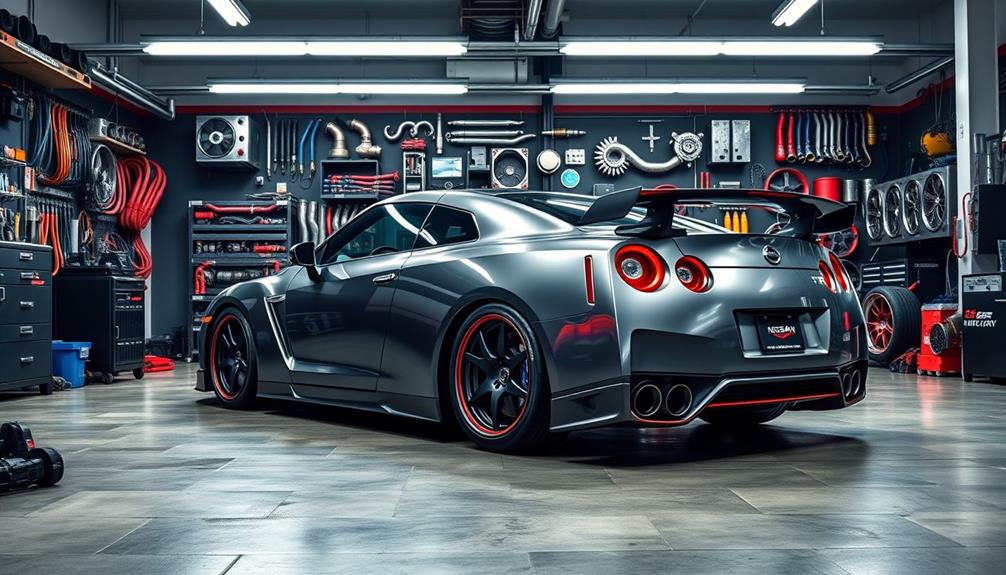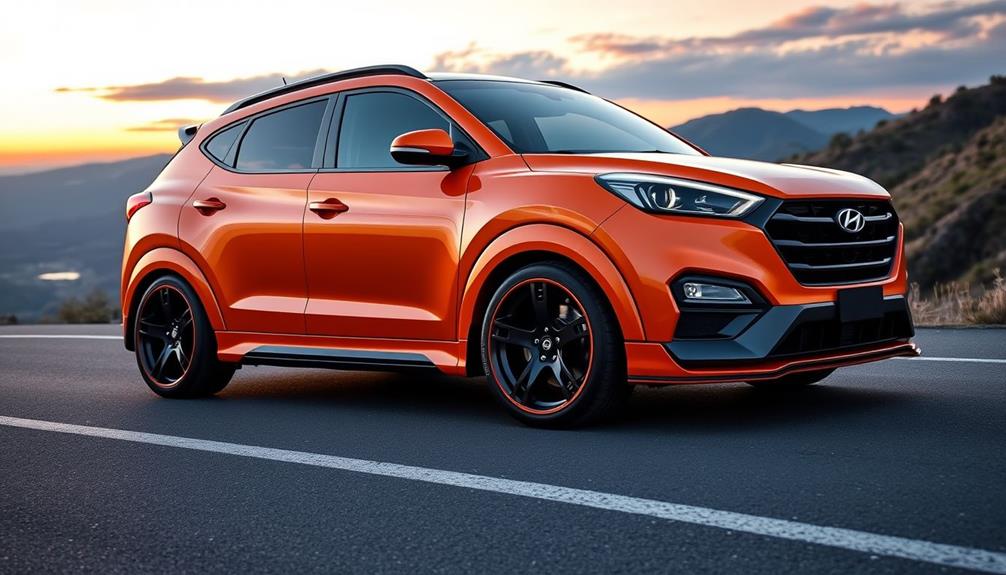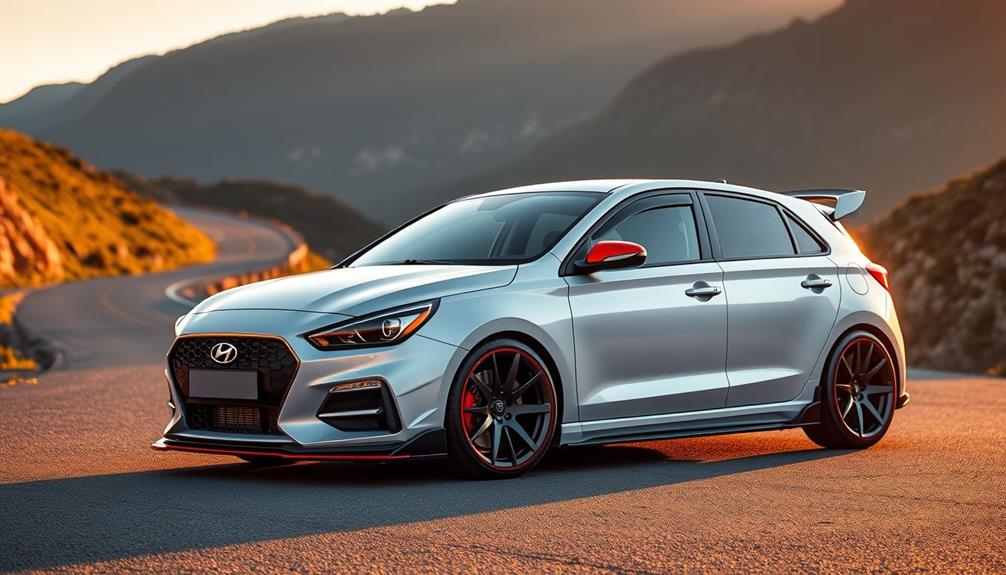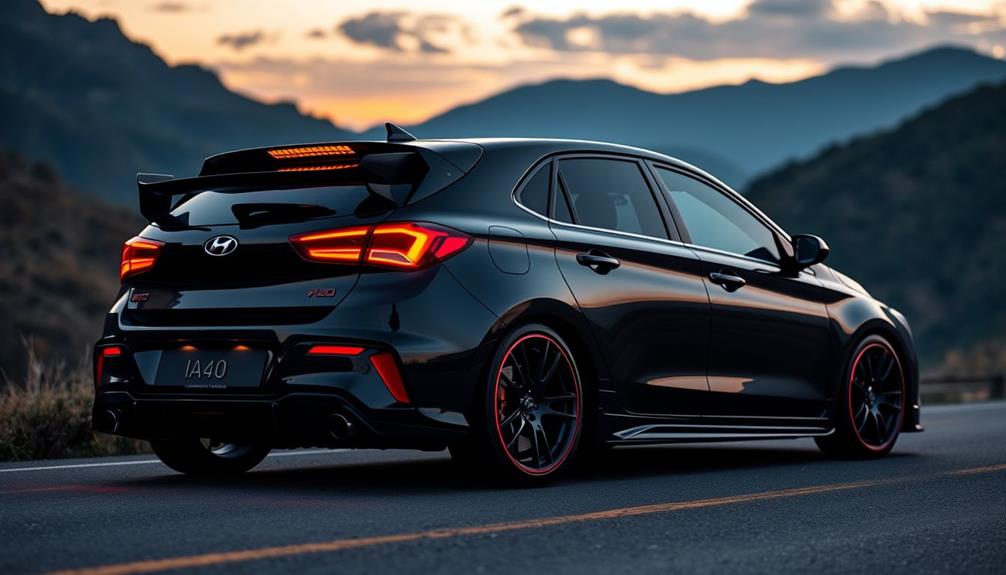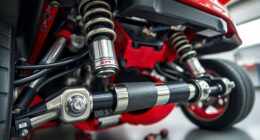Tuning your 2017 Hyundai Sonata can greatly enhance both power and efficiency. Start with an ECU remap, which can boost horsepower by about 10-15. Adding a high-flow K&N air intake and performance exhaust system further improves airflow and torque. Consider upgrading to an electronic throttle controller to enhance throttle response. While basic modifications can cost between $500 and $700, they can yield impressive gains. Joining the Hyundai community can provide invaluable support and advice. Discovering more options for upgrades can take your driving experience to the next level and make all the difference in performance.
Key Takeaways
- Upgrade to a cold air intake system and K&N air filter to enhance airflow, boosting horsepower and torque by up to 10%.
- Consider ECU remapping and performance chip modules for increased horsepower up to 20 and improved fuel efficiency.
- Install a performance exhaust system to enhance sound and engine efficiency, adding around 10 horsepower and 7 lb-ft torque.
- Improve throttle response with electronic throttle controllers for a more engaging and responsive driving experience.
- Engage with the Hyundai community for tips, DIY projects, and support on tuning modifications to maximize your Sonata's performance.
Performance Gains Overview
When you tune the stock 2.4L GDI engine in the 2017 Hyundai Sonata, you can expect noticeable performance gains. From a BTR dyno test, you could see an increase of about 10 horsepower and 7 torque.
If you opt for an ECU tune, like the LAP3, you can release even more power while improving fuel efficiency and optimizing your engine's air-fuel ratios.
For those looking for significant enhancements, simple modifications such as exhaust headers and a K&N air intake system can elevate your Sonata to over 200 horsepower.
Additionally, porting and polishing the engine head might provide a potential boost of up to 30 horsepower, although you'll want to be cautious about costs.
Improving throttle response is also essential for performance. By utilizing electronic throttle controllers like the TROS Potent Booster, you can enhance your driving experience without necessarily increasing horsepower or torque.
Essential Modifications for Power
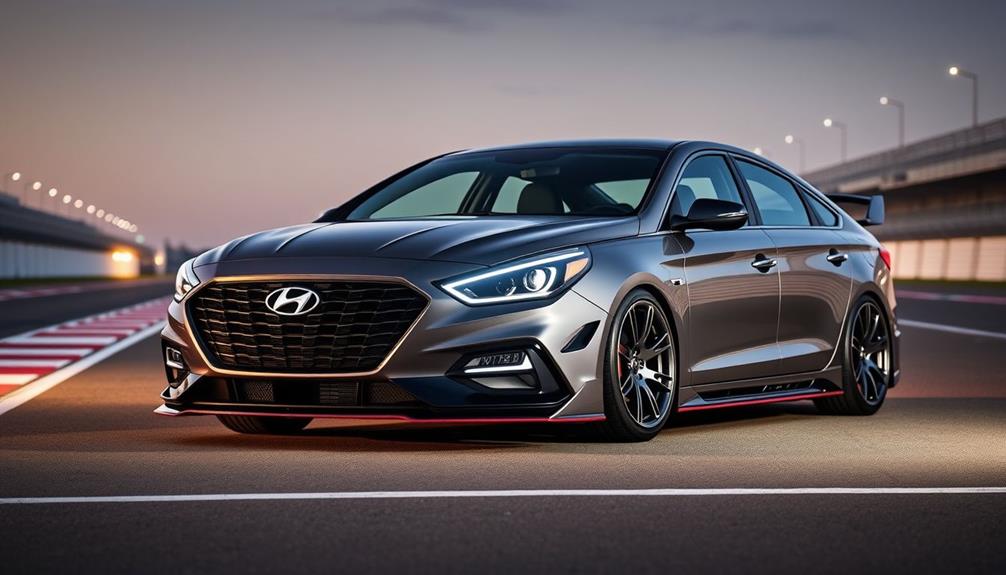
When it comes to boosting your 2017 Hyundai Sonata's power, certain modifications can make a significant difference.
You'll want to contemplate upgrades like a cold air intake, performance chip, and aftermarket exhaust to maximize performance gains.
We'll also weigh the costs against the benefits to help you make informed decisions on your tuning journey.
Performance Gains Overview
Tuning the 2017 Hyundai Sonata can transform your daily driver into a more spirited performer. By implementing a few essential modifications, you can achieve noticeable gains in engine performance. Upgrading the air intake and exhaust system can enhance airflow, resulting in improved horsepower and torque. Additionally, a performance ECU tune allows you to optimize engine parameters for better throttle response and fuel efficiency. For those exploring similar enhancements, many Hyundai Azera tuning tips can also be applied to the Sonata, given the shared engineering principles between the two models.
Start with a cold air intake system, which can optimize air intake and potentially boost horsepower and torque by up to 10%. Pair this with a high-performance K&N air filter to maximize airflow.
Next, consider upgrading to a performance exhaust system, like a 3-inch setup with resonator delete. This not only enhances the sound but also improves engine efficiency, contributing to overall performance gains. With these modifications, you might see an increase of around 10 horsepower and 7 lb-ft of torque.
For even greater throttle response, installing an electronic throttle controller, such as the TROS Potent Booster, can greatly improve your driving experience without directly impacting horsepower.
Finally, for those looking for a more advanced option, porting and polishing the engine head can yield an additional potential gain of around 30 horsepower, though this requires careful execution to avoid high costs.
Embrace these modifications, and you'll feel the difference every time you hit the road.
Recommended Upgrade Components
In order to maximize power and performance in your 2017 Hyundai Sonata, it's important to evaluate several key upgrades that can greatly enhance your driving experience.
By focusing on specific components, you can access the full potential of your sedan.
Here are three essential modifications to take into account:
1. Air Intake: Upgrading to a K&N air filter and cold air intake system can greatly improve airflow, boosting horsepower by up to 10% in your Sonata's 2.4L engine.
This enhancement not only increases power but also enhances engine efficiency.
2. Performance Chip: Installing a performance chip module can reveal hidden engine power, potentially increasing horsepower by up to 20 and torque by 25 lb-ft.
Additionally, you'll benefit from improved fuel economy, gaining up to 4 mpg.
3. Throttle Body: Think about upgrading to a larger throttle body.
This modification improves throttle response and overall acceleration, making your Sonata feel more responsive and enjoyable to drive.
Cost Vs. Benefits Analysis
Evaluating the costs versus the benefits of modifications for your 2017 Hyundai Sonata can help you make informed decisions about enhancing performance.
Basic upgrades, like a performance chip and cold air intake, can provide gains of up to 20 horsepower and 25 lb-ft of torque, all for a cost of around $500 to $700. This investment can greatly boost your engine's performance without the hefty price tag of a new vehicle.
Installing a K&N air filter and custom ECU reflash can optimize your air intake efficiency, enhancing throttle response and possibly improving fuel economy by up to 4 mpg.
Additionally, upgrading to a high-flow exhaust system, including headers and a 3-inch exhaust with resonator delete, can net you around 10 more horsepower and 7 lb-ft of torque.
While it's tempting to chase peak power, community insights suggest focusing on torque delivery across the RPM range for non-turbo models like the Sonata is often more beneficial.
Enhancing Throttle Response
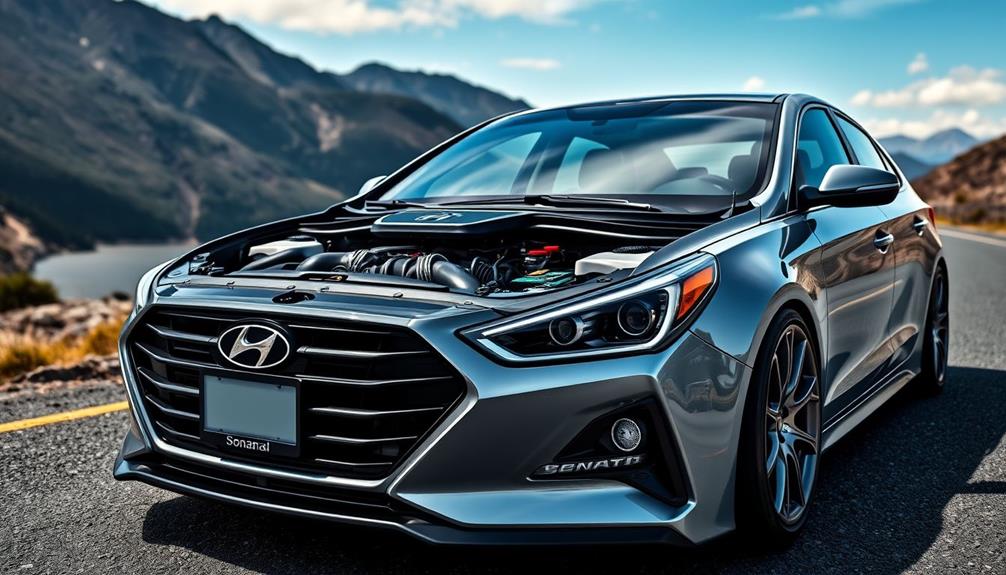
Improving throttle response can transform your driving experience, making it more engaging and responsive. When your Sonata's throttle response is enhanced, you'll notice a more immediate reaction when you press the gas pedal.
Here are some effective methods to achieve this:
- Install a TROS Potent Booster or Sprint Booster: These devices adjust the gas pedal voltage, increasing sensitivity without altering horsepower or torque directly.
- Consider a Pedal Commander: This electronic throttle controller improves responsiveness and eliminates lag, all without hardware modifications.
- Upgrade to a K&N air intake system: By optimizing airflow to the engine, you complement throttle response enhancements, leading to better overall performance.
Regular ECU tuning is also essential. By adjusting ignition timing and air-fuel ratios, you'll further refine throttle response, creating a more dynamic and engaging driving feel.
With these modifications, you can enjoy a sporty, responsive ride that brings excitement back to your daily drive. Making these upgrades not only boosts throttle response but also improves your Sonata's overall efficiency and performance.
Cost and Budget Considerations
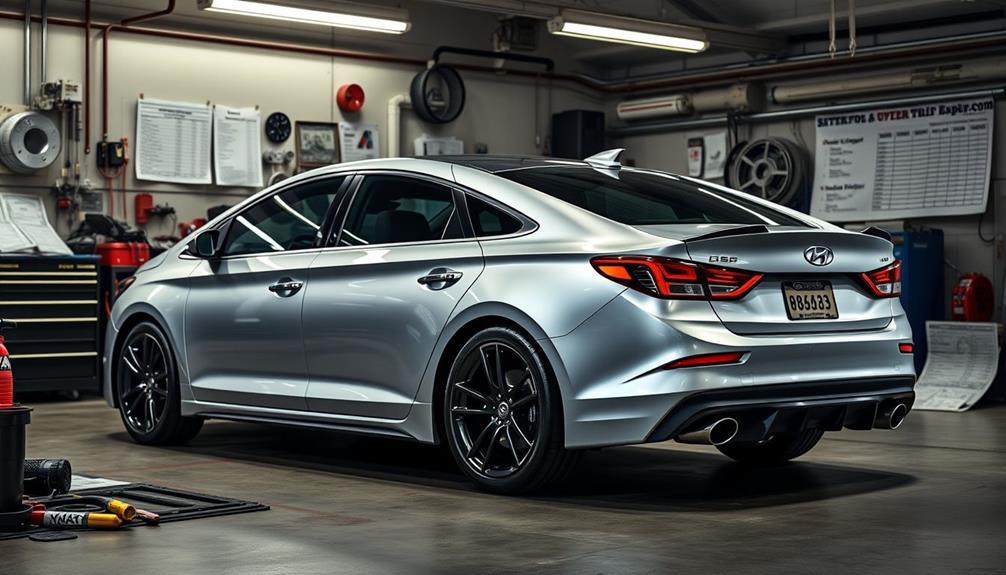
Upgrading your 2017 Hyundai Sonata can be an exciting journey, but it's important to keep your budget in check as you explore performance modifications.
Start by determining how much you're willing to invest. Basic modifications like chip tuning and supporting mods typically range from $500 to $700. If you're eyeing advanced options like cams and pulleys, you might add another $400 to $500 to your total.
For those craving considerable power gains, a T4 Turbo kit will set you back around $5,000, which can greatly impact your overall tuning budget. However, there's a silver lining—trading in your original parts can help offset these costs. Many dealerships offer better trade-in values, making it a smart financial strategy.
Consider more budget-friendly enhancements too. Upgrading to a K&N air filter or a 3-inch exhaust system can improve performance without breaking the bank, often costing between $200 and $500 each.
Community Support and Resources
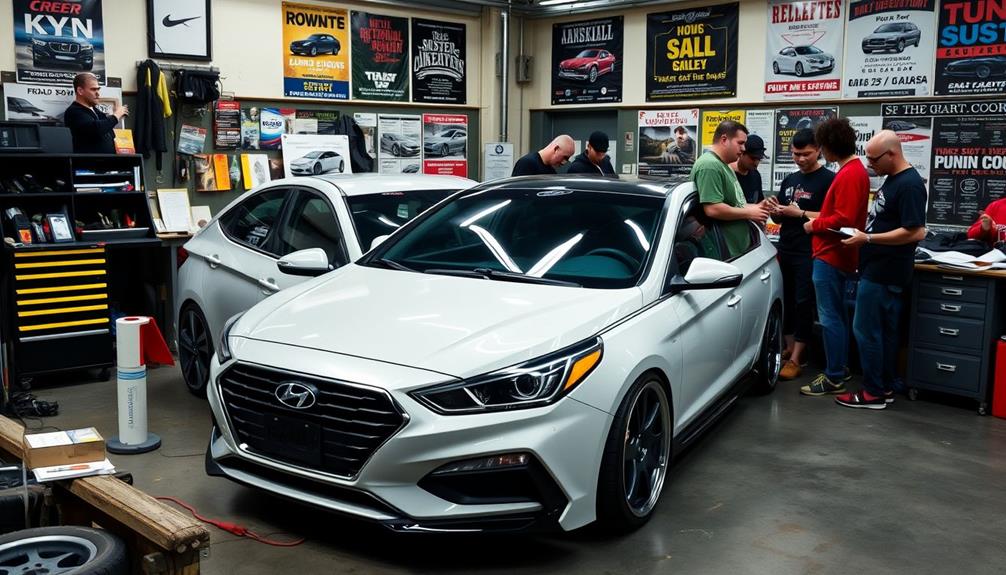
The tuning journey for your 2017 Hyundai Sonata can be greatly enhanced by tapping into community support and resources. Engaging with fellow enthusiasts not only broadens your knowledge but also offers practical insights on performance tuning and modifications.
Here are three key resources to evaluate:
- Hyundai Forum: This platform is essential for Sonata owners. You can exchange experiences, ask questions, and gain valuable advice on everything from air intakes to ECU tuning.
- Online Video Playlists: There are numerous guides available that provide step-by-step instructions for DIY tuning projects, including electric turbo installations. These resources make it easier for you to tackle modifications confidently.
- Local Support Groups: Connecting with local tuners can be incredibly helpful. They often provide hands-on assistance with machining and electronic upgrades, creating a collaborative learning environment.
Stages of Engine Tuning
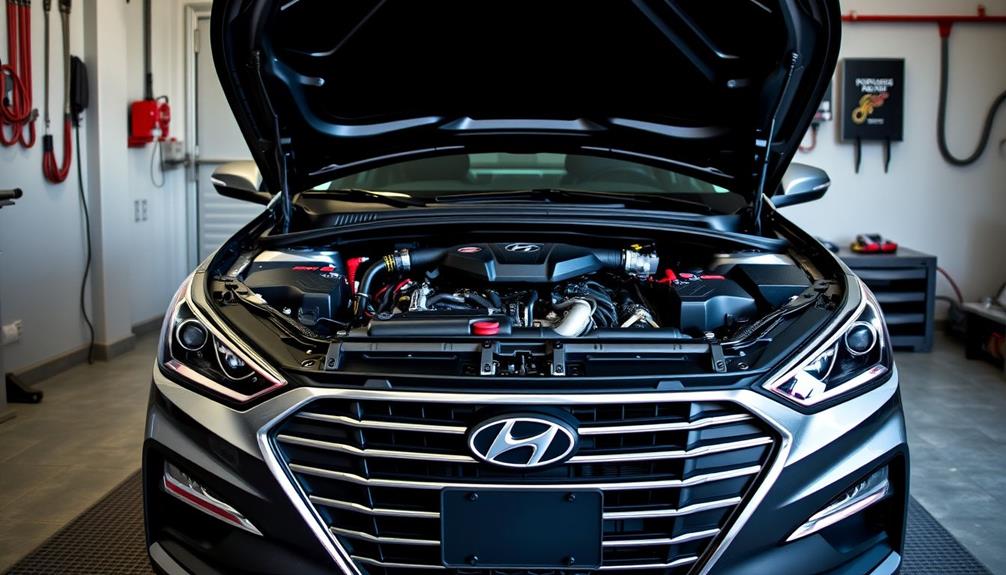
When it comes to tuning your 2017 Hyundai Sonata, understanding the different stages of engine modifications is essential for achieving your performance goals.
Stage 1 tuning usually starts with remapping the ECU, installing a sports exhaust, and upgrading to lightweight alloy wheels. These changes can boost your power levels by about 10-15 horsepower and improve throttle response.
Moving on to Stage 2 tuning, you'll focus on more advanced modifications like ported heads, fuel pump upgrades, and high-flow injectors. This can yield gains of 20-30 horsepower and enhance torque characteristics.
For those looking for serious performance, Stage 3 tuning introduces forced induction upgrades and internal engine modifications. This stage can see power increases of 30-50 horsepower but requires significant investment and expertise.
Frequently Asked Questions
How Often Should You Get a Tune up on a Hyundai Sonata?
You should get a tune-up for your Hyundai Sonata every 30,000 to 60,000 miles. Regular check-ups help maintain performance, fuel efficiency, and can prevent costly repairs, ensuring your vehicle runs smoothly over time.
Can You Modify a Sonata?
Absolutely, you can transform your Sonata into a powerhouse! By modifying components like the ECU, cold air intake, and exhaust system, you'll boost performance and enjoy an exhilarating driving experience you won't forget.
What Is the Fuel Efficiency for a Hyundai Sonata?
The fuel efficiency for a Hyundai Sonata varies by engine type. The 2.4L achieves 26 mpg city and 36 mpg highway, while the 2.0L turbo offers 23 mpg city and 32 mpg highway.
What Is the Most Powerful Hyundai Sonata?
The most powerful Hyundai Sonata is the 2017 Sonata Sport 2.0T, boasting 245 horsepower and 260 lb-ft of torque. It's equipped with a turbocharged engine that enhances both performance and efficiency for an engaging driving experience.
Conclusion
To sum up, tuning your 2017 Hyundai Sonata can greatly boost both power and efficiency. With the right modifications and a clear budget, you'll not only enhance your driving experience but also enjoy the journey. Remember, "a journey of a thousand miles begins with a single step." So, whether it's upgrading your exhaust or improving throttle response, take that first step and watch your sedan transform into a more dynamic ride. Happy tuning!

